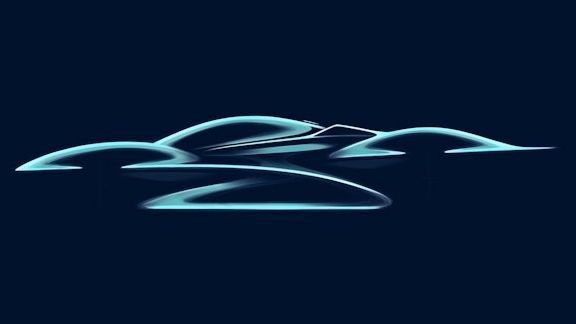MILTON KEYNES, U.K. — When the COVID-19 pandemic resulted in a lockdown across the U.K. during the Christmas of 2020, Red Bull’s legendary Formula One designer, Adrian Newey, found himself with a lot of time on his hands.
Usually he’d spend the period between Christmas and New Year skiing or taking a holiday in South Africa with his wife, but with no plans in place, he let his imagination run wild on his drawing board. What he came up with was the early sketches for a mind-blowing £5 million (plus tax) hypercar known as the RB17.
Hardcore F1 fans will recognise the significance of the name, which plugs the gap between last year’s championship-winning RB16B F1 car and this year’s RB18. For those not in the know, the RB stands for Red Bull and the following number has ascended over the years in line with the amount of seasons Red Bull has been racing in F1, starting with the RB1 in 2005.
When the pandemic hit in 2020, F1 introduced cost saving measures for the 2021 season that mandated the carryover of chassis designs from one year to the next. As a result, Red Bull decided its 2021 car should be called the RB16B in reference to its shared chassis with 2020’s RB16, leaving the RB17 name up for grabs.
Around the same time, Newey was spending his Christmas dreaming up ways of making a two-seater hypercar go as fast as a single-seater F1 car around a racetrack. Bringing F1 performance to a very, very small percentage of the masses, if you like.
However, unlike the Aston Martin Valkyrie, which Newey and Red Bull Advanced Technologies (RBAT) designed in conjunction with Aston Martin between 2014 and 2016, this new RB17 hypercar would not be road legal.
While some prospective owners might balk at the idea of spending over £5 million on a car that isn’t allowed to turn a wheel on the public highway, the track focus of the RB17 comes with some big advantages. Essentially, Newey has been given free rein to design a car with the sole purpose of speed, without the need to make compromises to comply with any sort of regulatory framework.
Road cars have to meet all sorts of emissions and legality tests, but a car destined for the track has far fewer rules imposed on it. And because it’s not designed to go racing in a specific category, all the smart ideas that have been banned in motorsport over the years can be applied to the RB17 as Newey sees fit.
“Of course there…
Click Here to Read the Full Original Article at www.espn.com – RPM…

